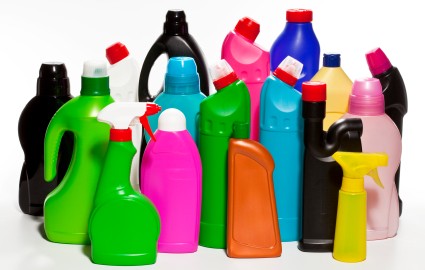Fragrances: A Growing Health and Environmental Hazard
At Hawaii Naturopathic Retreat Center – for Fasting, Detoxification & Meditation we combine the best of detoxification methods with psychotherapy, meditation and spiritual ideas. In order to achieve maximal healing in minimal time. Learning about rest and sleep plays an important role.
Read about our purpose and mission, and our philosophy and medical approach.
Fragrances: A Growing Health and Environmental Hazard
Today’s fragrances make you think they are made from flowers, but many contain toxic chemicals that you inhale and absorb through your skin. Fragrance chemicals in fabric softeners, laundry detergents, perfumes, personal care products, air fresheners and many other products contribute to health problems and environmental damage.
Fragrances can be present even if you can’t smell them. Your sense of smell gives you information about new odors. Continued exposure to an odor, such as a fragranced laundry product, makes you unable to smell that odor. It doesn’t matter if you are exposed to your fragrance or to someone else’s fragrance- you will be unable to smell it after a short period of time.
Many products can contain fragrance chemicals:
-
- Fabric softeners
- Laundry detergents
- Soaps (bar and liquid)
- Dishwashing detergents
- Bleach and bleach powders
- Air fresheners and deodorizers (in buildings, cars, etc.)
- Disinfectant sprays
- Pesticides
- Candles, potpourris
- Tissues and toilet paper
- Plastic bags, trash and kitchen
- Diapers
- Clothing and fabrics
- Toys, books
- Hair products
- Cosmetics
- Hand and body lotions
- Bath powders and oils
- Deodorants and anti-perspirants
- Shaving creams and after shaves
- Essential oils
- Perfumes and colognes
- Nail polish and polish remover
- Advertising materials
- Scented papers
- Marking pens
- Food additives
Etc…
You are not protected by the government from exposure to fragrance chemicals in products. Despite the widespread, constant exposure to an unknown number of fragrance chemicals in thousands of products, there is minimal government regulation and monitoring their safety.
- Trade secret laws keep toxicity testing and identification of fragrance ingredients from being accurately and truthfully disclosed to anyone, including the FDA.
- The FDA does not review the safety of cosmetic products or their ingredients and can’t require manufacturers to do safety testing before their products are marketed.
- Fragrance chemicals do not have to be listed on the product label.
- The fragrance industry is primarily self- regulated.
WATCH-OUT FOR ARTIFICIAL FRAGRANCES
At Hawaii Naturopathic Retreat Center – for Fasting, Detoxification & Meditation we combine the best of detoxification methods with psychotherapy, meditation and spiritual ideas. In order to achieve maximal healing in minimal time. Learning about rest and sleep plays an important role.
Read about our purpose and mission, and our philosophy and medical approach.
Fragrances: A Growing Health and Environmental Hazard
Today’s fragrances make you think they are made from flowers, but many contain toxic chemicals that you inhale and absorb through your skin. Fragrance chemicals in fabric softeners, laundry detergents, perfumes, personal care products, air fresheners and many other products contribute to health problems and environmental damage.
Fragrances can be present even if you can’t smell them. Your sense of smell gives you information about new odors. Continued exposure to an odor, such as a fragranced laundry product, makes you unable to smell that odor. It doesn’t matter if you are exposed to your fragrance or to someone else’s fragrance- you will be unable to smell it after a short period of time.
Many products can contain fragrance chemicals:
Fabric softeners
Laundry detergents
Soaps (bar and liquid)
Dishwashing detergents
Bleach and bleach powders
Air fresheners and deodorizers (in buildings, cars, etc.)
Disinfectant sprays
Pesticides
Candles, potpourris
Tissues and toilet paper
Plastic bags, trash and kitchen
Diapers
Clothing and fabrics
Toys, books
Hair products
Cosmetics
Hand and body lotions
Bath powders and oils
Deodorants and anti-perspirants
Shaving creams and after shaves
Essential oils
Perfumes and colognes
Nail polish and polish remover
Advertising materials
Scented papers
Marking pens
Food additives
Etc…
You are not protected by the government from exposure to fragrance chemicals in products. Despite the widespread, constant exposure to an unknown number of fragrance chemicals in thousands of products, there is minimal government regulation and monitoring their safety.
Trade secret laws keep toxicity testing and identification of fragrance ingredients from being accurately and truthfully disclosed to anyone, including the FDA.
The FDA does not review the safety of cosmetic products or their ingredients and can’t require manufacturers to do safety testing before their products are marketed.
Fragrance chemicals do not have to be listed on the product label.
The fragrance industry is primarily self- regulated.
Your skin, your body’s largest organ, absorbs fragrance chemicals by direct application, by contact with fragranced items, and by exposure to air containing fragrances. Fragranced products provide a constant source of chemicals that are absorbed into your skin and inhaled as vapors. They go directly into your blood and can affect the entire body. Some fragrance chemicals can alter the skin’s surface tension, which greatly facilitates the absorption of other chemicals into the skin.
- Fragrances can be skin allergens, irritants, and photosensitizers
- 1-2% of the population may have an allergy to fragrances.
- There is a direct correlation between the use of scented products and the development of allergy to fragrance.
- Contact dermatitis can be caused by contact with fragrance materials in the air or on surfaces.
- Fragrances easily volatilize and linger a long time in the air. They settle and stick to your skin, hair, clothes, furnishings, etc.
- Everyone, especially those with eczema, psoriasis, and other skin conditions, should avoid exposure to fragranced products.
Clothing and bedding washed and dried with fragranced products provide a constant exposure to fragrance chemicals that are inhaled and absorbed through the skin. Infants’ skin is especially susceptible to absorbing fragrance chemicals directly from clothing, bedding, diapers, as well as indirectly from the air.
- Manufacturers specifically make fragrances to be long lasting. They do not break down easily and their break down products can be more toxic than the original substances.
- Laundry product fragrances accumulate in fabrics and are very difficult to remove. If you use laundry facilities where other people use fragranced products, your laundry will absorb their fragrances.
Neurological Effects
- Fragrance chemicals affect the brain and nervous system, with some of their effects being immediate and transitory, while other effects are chronic and long lasting.
- Fragrances can: modify brain blood flow; alter blood pressure, pulse, and mood; and trigger migraine headaches.
- AETT and musk ambrette, fragrances chemicals that were used for decades, were found to be neurotoxic.
- Several common fragrances, when inhaled, have potent sedative effects.
- Fragrances are specifically formulated and used for public behavior control.
Respiratory Effects
Fragrances can induce or worsen respiratory problems. A majority of known fragrance chemicals are respiratory irritants, which cause inflammation and some are rare respiratory sensitizers. Respiratory irritants, which cause inflammation and increase mucus production, make the airways more susceptible to injury and allergens, as well as trigger and exacerbate such conditions as asthma, allergies, sinus problems, and other respirator disorders.
- 15% of people experience lower airway irritation from fragrance exposure.
- Fragrances can trigger asthma in school-age children. Asthma is now the leading serious chronic illness among youth, affecting nine million American children.
- 72% of asthmatics cite fragrance as a trigger. One in fourteen adults suffers from asthma, and asthma rates have doubled since 1980.
- A severe asthmatic reaction from acute fragrance exposure may cause death.
WATCH-OUT FOR ARTIFICIAL FRAGRANCES
At Hawaii Naturopathic Retreat Center – for Fasting, Detoxification & Meditation we combine the best of detoxification methods with psychotherapy, meditation and spiritual ideas. In order to achieve maximal healing in minimal time. Learning about rest and sleep plays an important role.
Read about our purpose and mission, and our philosophy and medical approach.
Fragrances: A Growing Health and Environmental Hazard
Today’s fragrances make you think they are made from flowers, but many contain toxic chemicals that you inhale and absorb through your skin. Fragrance chemicals in fabric softeners, laundry detergents, perfumes, personal care products, air fresheners and many other products contribute to health problems and environmental damage.
Fragrances can be present even if you can’t smell them. Your sense of smell gives you information about new odors. Continued exposure to an odor, such as a fragranced laundry product, makes you unable to smell that odor. It doesn’t matter if you are exposed to your fragrance or to someone else’s fragrance- you will be unable to smell it after a short period of time.
Many products can contain fragrance chemicals:
Fabric softeners
Laundry detergents
Soaps (bar and liquid)
Dishwashing detergents
Bleach and bleach powders
Air fresheners and deodorizers (in buildings, cars, etc.)
Disinfectant sprays
Pesticides
Candles, potpourris
Tissues and toilet paper
Plastic bags, trash and kitchen
Diapers
Clothing and fabrics
Toys, books
Hair products
Cosmetics
Hand and body lotions
Bath powders and oils
Deodorants and anti-perspirants
Shaving creams and after shaves
Essential oils
Perfumes and colognes
Nail polish and polish remover
Advertising materials
Scented papers
Marking pens
Food additives
Etc…
You are not protected by the government from exposure to fragrance chemicals in products. Despite the widespread, constant exposure to an unknown number of fragrance chemicals in thousands of products, there is minimal government regulation and monitoring their safety.
Trade secret laws keep toxicity testing and identification of fragrance ingredients from being accurately and truthfully disclosed to anyone, including the FDA.
The FDA does not review the safety of cosmetic products or their ingredients and can’t require manufacturers to do safety testing before their products are marketed.
Fragrance chemicals do not have to be listed on the product label.
The fragrance industry is primarily self- regulated.
Your skin, your body’s largest organ, absorbs fragrance chemicals by direct application, by contact with fragranced items, and by exposure to air containing fragrances. Fragranced products provide a constant source of chemicals that are absorbed into your skin and inhaled as vapors. They go directly into your blood and can affect the entire body. Some fragrance chemicals can alter the skin’s surface tension, which greatly facilitates the absorption of other chemicals into the skin.
Fragrances can be skin allergens, irritants, and photosensitizers
1-2% of the population may have an allergy to fragrances.
There is a direct correlation between the use of scented products and the development of allergy to fragrance.
Contact dermatitis can be caused by contact with fragrance materials in the air or on surfaces. Fragrances easily volatilize and linger a long time in the air. They settle and stick to your skin, hair, clothes, furnishings, etc.
Everyone, especially those with eczema, psoriasis, and other skin conditions, should avoid exposure to fragranced products.
Clothing and bedding washed and dried with fragranced products provide a constant exposure to fragrance chemicals that are inhaled and absorbed through the skin. Infants’ skin is especially susceptible to absorbing fragrance chemicals directly from clothing, bedding, diapers, as well as indirectly from the air.
Manufacturers specifically make fragrances to be long lasting. They do not break down easily and their break down products can be more toxic than the original substances.
Laundry product fragrances accumulate in fabrics and are very difficult to remove. If you use laundry facilities where other people use fragranced products, your laundry will absorb their fragrances.
Neurological Effects
Fragrance chemicals affect the brain and nervous system, with some of their effects being immediate and transitory, while other effects are chronic and long lasting.
Fragrances can: modify brain blood flow; alter blood pressure, pulse, and mood; and trigger migraine headaches.
AETT and musk ambrette, fragrances chemicals that were used for decades, were found to be neurotoxic.
Several common fragrances, when inhaled, have potent sedative effects.
Fragrances are specifically formulated and used for public behavior control.
Respiratory Effects
Fragrances can induce or worsen respiratory problems. A majority of known fragrance chemicals are respiratory irritants, which cause inflammation and some are rare respiratory sensitizers. Respiratory irritants, which cause inflammation and increase mucus production, make the airways more susceptible to injury and allergens, as well as trigger and exacerbate such conditions as asthma, allergies, sinus problems, and other respirator disorders.
15% of people experience lower airway irritation from fragrance exposure.
Fragrances can trigger asthma in school-age children. Asthma is now the leading serious chronic illness among youth, affecting nine million American children.
72% of asthmatics cite fragrance as a trigger. One in fourteen adults suffers from asthma, and asthma rates have doubled since 1980.
A severe asthmatic reaction from acute fragrance exposure may cause death.
Hormone Disrupting Effects
Every year more and more commonly used chemicals are found to be endocrine disrupters, and it is presently unknown what percentage of the hundreds of fragrance chemicals have these properties. Fragrances often contain large amounts of phthalates, a group of toxic chemicals that are known estrogen and testosterone hormone disrupters. Phthalates are used to impart an oily moisturizing film and to help dissolve and fix other ingredients in fragrances.
- Health Care Without Harm, a research and action group found phthalates in most of the popular beauty products that they tested. Reproductive aged women buy more cosmetics and personal care products than other Americans and have a greater exposure to phthalates.
- A recent study suggests that diethyl phthalate, commonly used in fragrances and other personal care products, damages the DNA of sperm in adult men, which can lead to infertility, may be linked to miscarriages and birth defects, and may lead to cancer and infertility in their offspring.
- Phthalates have been associated with thyroid disorders, premature breast development in baby girls and abnormal sexual development in male fetuses and infants (hypospadias and undescended testes).
- Phthalates are found in the blood of pregnant women at levels of concern. They can cross the placenta and are found in breast milk. Women are exposed to phthalates at home, at work, everywhere.
- 100% of people have phthalates in their urine.
Systemic Effects
As fragrance chemicals can be absorbed, inhaled, or ingested, they can possibly affect any organ system. A combination of limited human data and a wealth of animal studies show that phthalates, as only one of many chemicals in fragrances, can impair reproduction and development, alter liver and kidney function, damage the heart and lungs, and effect blood clotting. Some fragrance chemicals are carcinogens. Many air fresheners contain the pesticide paradichlorobenzene, a known carcinogen.
Environmental Effects
Indoor and outdoor air quality: Fragrances are volatile compounds and they are constantly being released into the air. The widespread use and vast numbers of fragranced products can cause extensive indoor and outdoor air pollution. Many people find it difficult to enter public buildings, attend public events, stand near people or walk outdoors due to fragrances present in the air. A Norwegian study found synthetic musk fragrances to be present in outdoor air, even in a remote area.
Water quality: Waste water treatment does not remove the constantly increasing quantity and types of fragrance chemicals, many of which are persistent and accumulate in the environment. The documented presence of fragrance chemicals in drinking water. Streams, and lakes could adversely affect the health of people, animal life, and plants.
Health Hazards of the 20 Most Common Chemicals Found in 31 Fragrance Products:
- Cancer
- Death due to respiratory failure
- Neurotoxic reactions (to the central and peripheral nervous systems): coma, convulsions, headache, depression, dizziness, irritability, confusion, panic attacks, anxiety, memory loss, impaired concentration, drowsiness, insomnia, impaired vision, stupor, spaciness, giddiness, slurred speech, twitching muscles, tingling in the limbs, loss of muscular coordination. The continuous low level exposure to neurotoxin can lead to progressive and permanent brain damage.
- Inhalation of fragrance can cause: asthma, reactive airway disease, difficulty breathing, coughing, drying, irritation, and inflammation of the mucus membranes of the nose, sinuses, mouth, throat, and lungs.
- Eye irritant
- Drying and cracking of the skin
- Fatigue
- Damage to the immune system
- Kidney and liver damage
- Nausea, vomiting, abdominal pain
- Drop or rise in blood pressure
Intentional Fragrance Exposures in Public Places
Fragrances are dispersed through ventilation systems and by individual units in many public areas, including airplanes and buildings (offices, stores, restaurants, hotels, airports, hospitals, nursing homes etc).
Fragrances are designed to:
- Add a “pleasant” scent to the air
- Cover up poor air quality and insufficient fresh air ventilation
- Change the mood and behavior of people (increase worker productivity, increase retail sales, relax the public in potentially stressful places or situations such as airports, subways, etc).
Your daily exposure to chemicals is extensive…and growing!
- 30% or more of the U.S. population reacts to one or more synthetic chemical substances.
- Over 80,000 synthetic chemicals are in use today, most of which have not been tested individually or in combination for the effects on human health.
- Continual exposure to these common, pervasive, low- level chemicals can cause and initial reaction and then a “spreading” effect where one reacts to many other kinds of chemicals.
- Environmental illnesses chronic disease caused by exposure to chemicals is widespread and ever increasing.
- Chemicals are EVERYWHERE, so it is of utmost importance to choose “non-toxic” alternatives in all aspects of our lives.
Use fragrance free products! A variety of fragrance-free products are available from natural health food stores and mail order catalogs. Read product labels carefully.
Misleading advertising words such as natural, floral, hypoallergenic, natural scent make you think the product is safe when it may not be!







